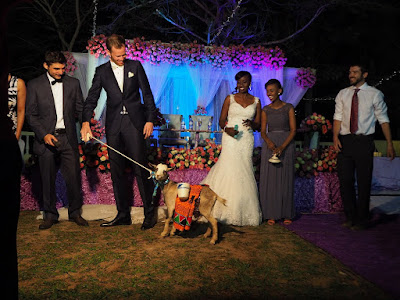After Jan and Yvette's wedding I had another couple of days free so I headed to Volcanoes National Park, where I joined a guided hike to the top of Mt Bisoke (3711m). It's one of a series of volcanoes which rise up to 4500m and form the border between Rwanda, Congo and Uganda.
I soon found out hiking is Rwanda is nothing like tramping in New Zealand. For one thing you're not allowed anywhere on your own - the dozen or so tourists on the hike were accompanied by a guide, several park rangers, half a dozen porters and five Rwandan army soldiers toting Kalashnikovs (to protect us from buffalos and elephants, apparently).
However, the biggest wildlife I saw was this earthworm...
The trailhead is at 2500m but it was still quite a slog to the top through rainforest and stinging nettles...
Alas at the top the mist was so thick it was impossible to see the view or even the crater lake. All I could see was this sign. It was also bitterly cold up there so we didn't hang around long (that's not a smile, my face has frozen into a grimace).
Things got really interestting on the way down because two days of rain had turned the track into a mud chute. By the time we got down, about six hours later, we were all caked in mud.
Then the clouds parted just long enough for us to get a peek of the mountain...
... and I caught one last glimpse at sunset.


















































